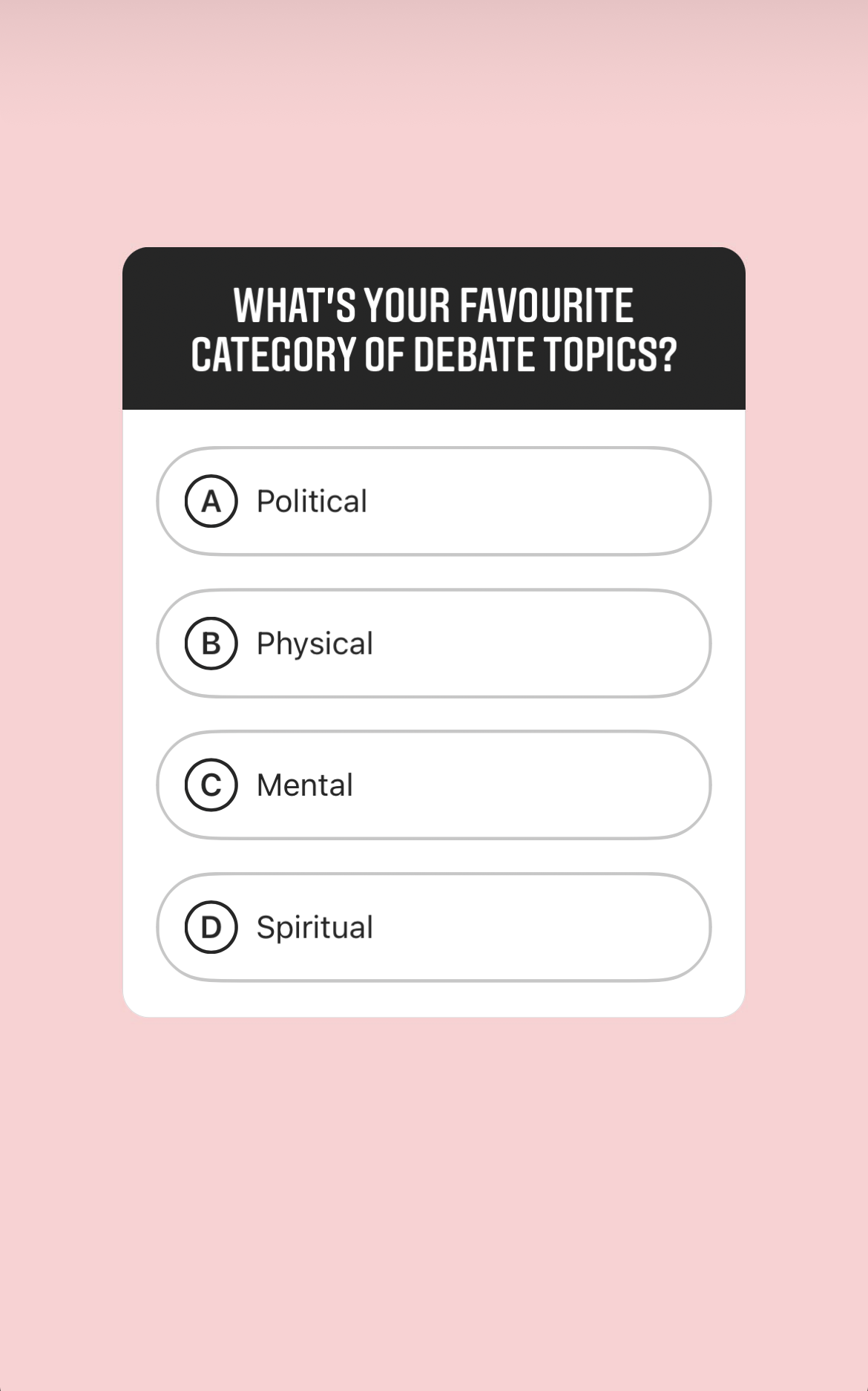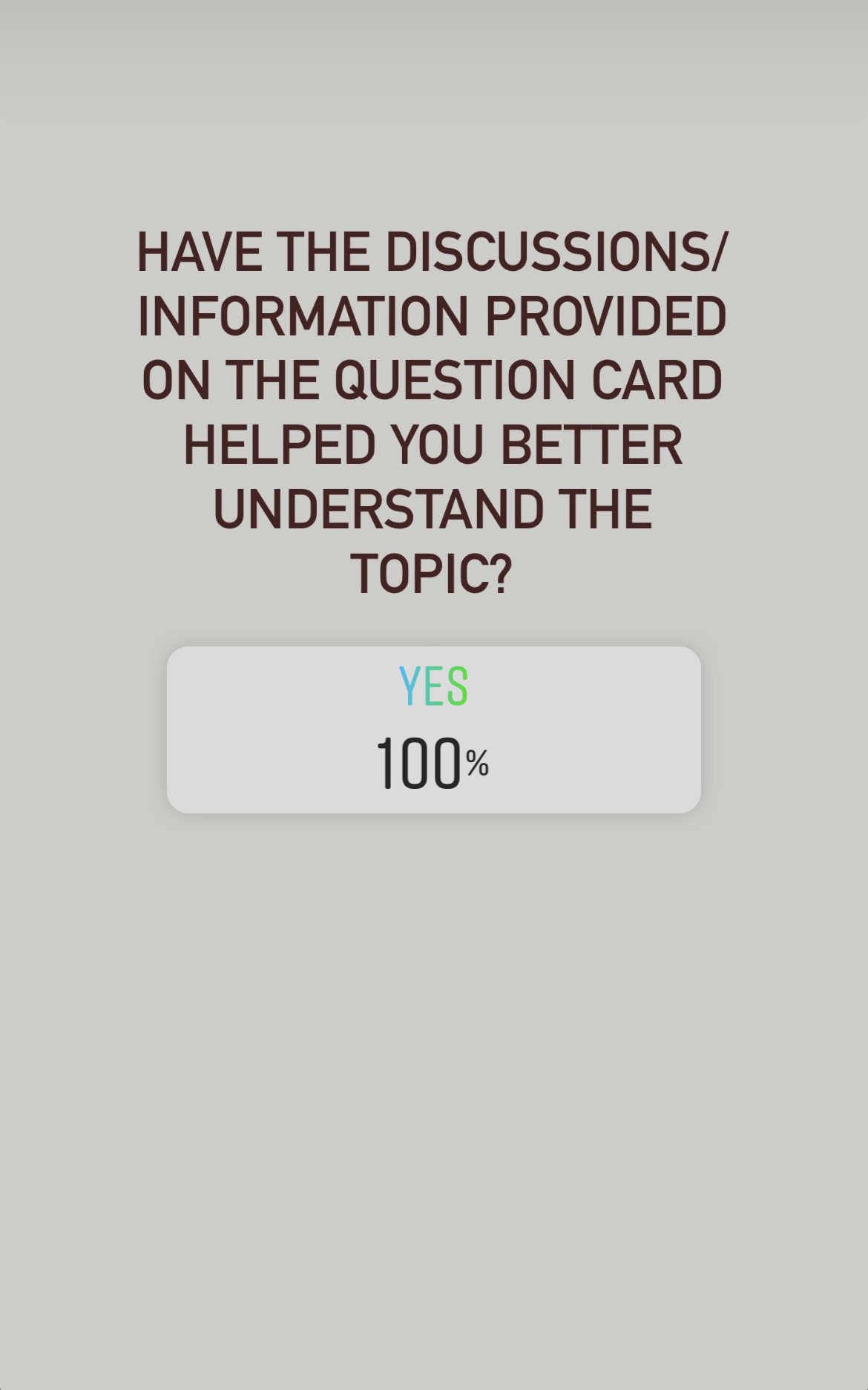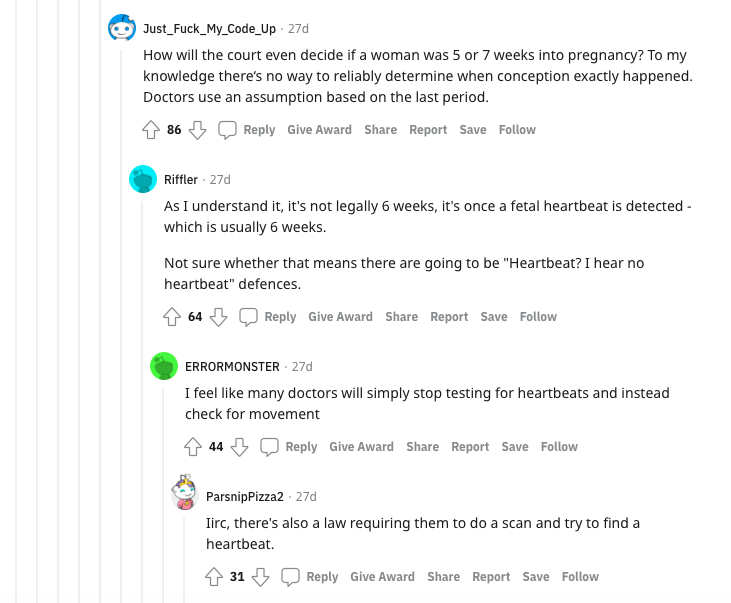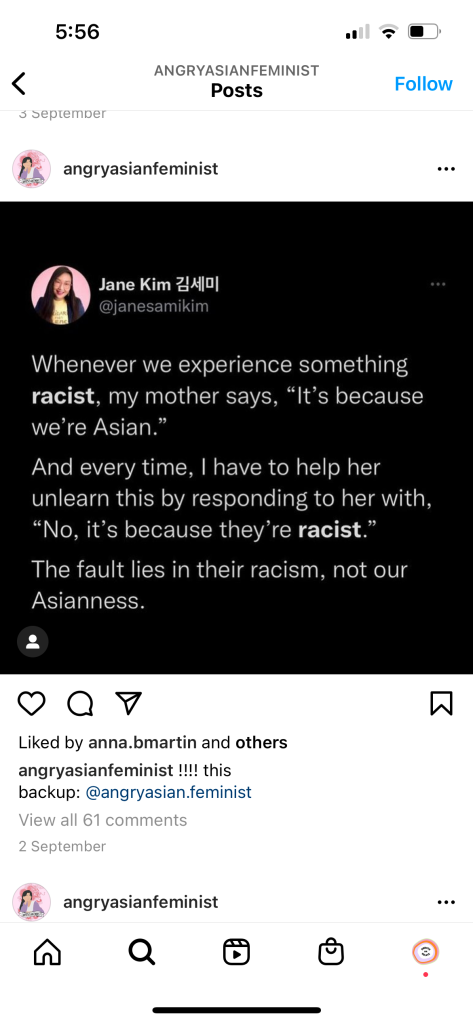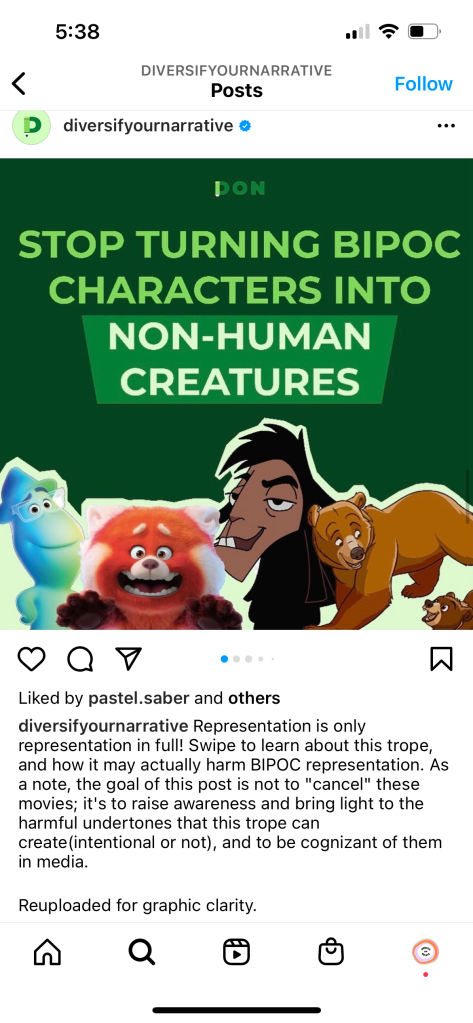My digital artefact, Debate or Relate is an online flashcard game I created with my peer, Remy, that is played on the public domain of Instagram. We took inspiration from card games such as We’re Not Really Strangers and Cards Against Humanity. Our game works by Remy and I prompting question cards relating to significant topics, social issues and events. For the players to participate, they comment their opinion and perspective on the topic and have discussions with other players about it.
While there are already platforms where conversations on topics occur such as Reddit, we believe Debate or Relate is unique as we also post information cards containing factual and reliable information relating to the topic in order for the users to gain a deeper understanding of the matter.
Additionally, due to Instagram’s features such as anonymous question boxes on stories and direct messaging, there is an element of anonymity and privacy that users may prefer to utilise, rather than stating their opinion publicly. The goal is for the users to develop empathy and compassion for the issues while also listening and appreciating the opinions of others. We also aim for the users to gain a deeper understanding of societal issues and topics in order to be an informed member of society, which is our social utility. In order to create content for our DA, we observe current news and media to see if there are any trending issues and topics that are widely talked about. Once we find a topic, we then use Canva to create a question card and find factual and reliable information on the matter that does not contain any opinions or biased information. The purpose of including information cards is to help inform and further educate the user on the topic, not alter or sway their perception on it. As we create and plan our content in advance, here is a look at our future content we have prepared.

We prep our content in advance in order to adhere to the FIST principles of Fast, Inexpensive, Simple and Tiny. By doing this, our content is always ready to post at any time, leaving little room for inactivity. Once we post the content, all we have to do is create a commentator card and post it which usually takes no more than 5 minutes, depending on the length of the response and if we choose to include more than one comment. As a result, Debate or Relate adheres to the FIST principle.
An important learning moment we have had is that quality always trumps quantity. Although our game has less than 40 followers, there have been insightful and large conversations made on certain question cards which emphasises quality over quantity. To elaborate, on the question card attached below, there was a large discussion between three people who had differing perspectives. Reading this conversation was extremely beneficial for myself as a mediator as I could see that my aim of instigating conversations on important topics was occurring, without the need of a large following.
Looking at our engagement, there is usually little to no likes or 1-3 comments on each post to the public eye. Although, there is a large amount of users who direct message us their perspectives and thoughts on question cards and there is usually a good amount of interaction on story posts. This includes story polls and anonymous question boxes that we post when question cards are uploaded. These story and direct messaging interactions highlight that perhaps some users do not feel comfortable posting their opinions publicly and would rather their answers to be anonymous or private. As a result, this has shown us that story features are extremely useful and we will keep implementing them within our digital artefact.
In order to gather feedback from our users, we used story features such as polls and question boxes. A question we asked was what topics they wanted to see us post. This is crucial for our DA since we want to project future subjects that are not only relevant but also something that our users desire to discuss and engage with. The responses we received sparked our curiosity in investigating new themes and issues. We believe that by considering and applying this feedback, we will not only have continued acceptance of new topics but also greater user participation.

When we asked our players if our discussions and the information cards on the topics have been helpful in deepening their understanding of the topic, 100% of voters said yes. This demonstrates our social utility as it is evident that Remy and I’s main goal of our players learning and becoming more educated on important topics is being achieved through our game.
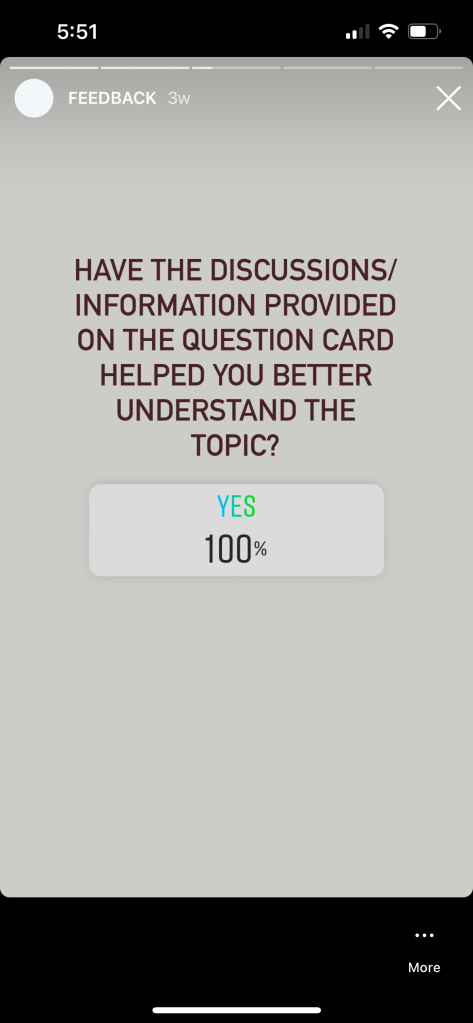
Here is some more feedback we received from utilising Instagram’s story features.



Additionally, feedback from my beta video stated that we should push our game onto more platforms such as Tiktok.

We ended up attempting to do this by creating a video advertisement for people to hop onto our Instagram game and also tried to stimulate conversations on TikTok.
While these TikTok videos had a decent amount of views averaging 500, it didn’t bring any new players onto the Instagram game and no one responded to our questions attempting to start discussions. This became another important learning moment for us as we realised that we should put our focus solely on Instagram so we ended up ditching TikTok altogether.
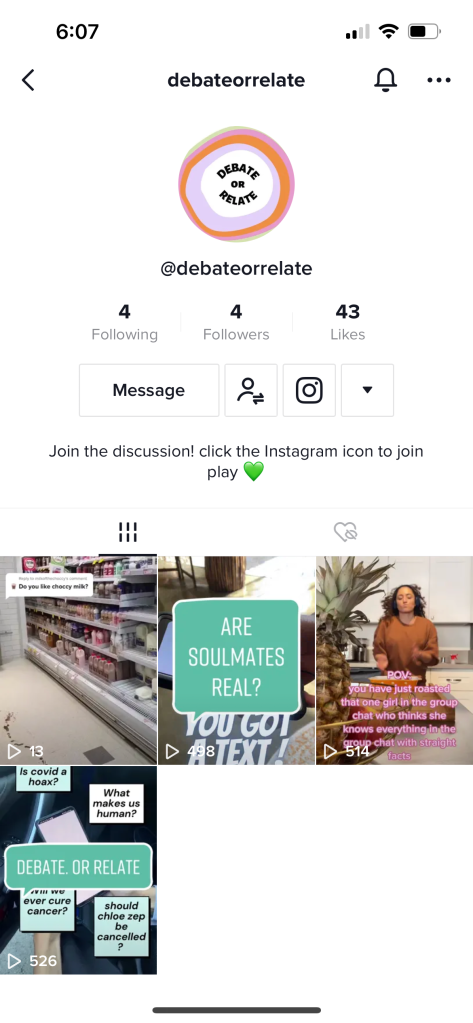
Evidently, the experience of being a game creator and mediator has been a fun and unique journey. I aim to keep continuing Debate or Relate as I believe it has not only deepened my knowledge on important societal issues, but also the players which is extremely beneficial and rewarding.




